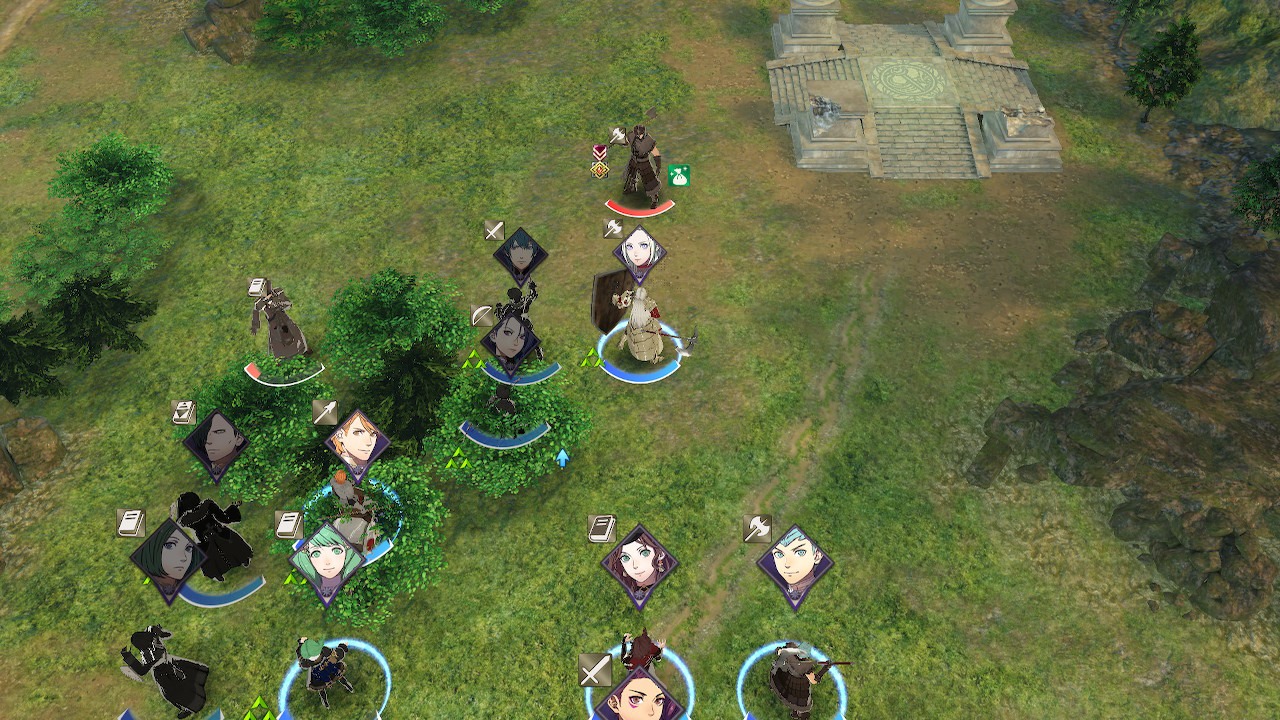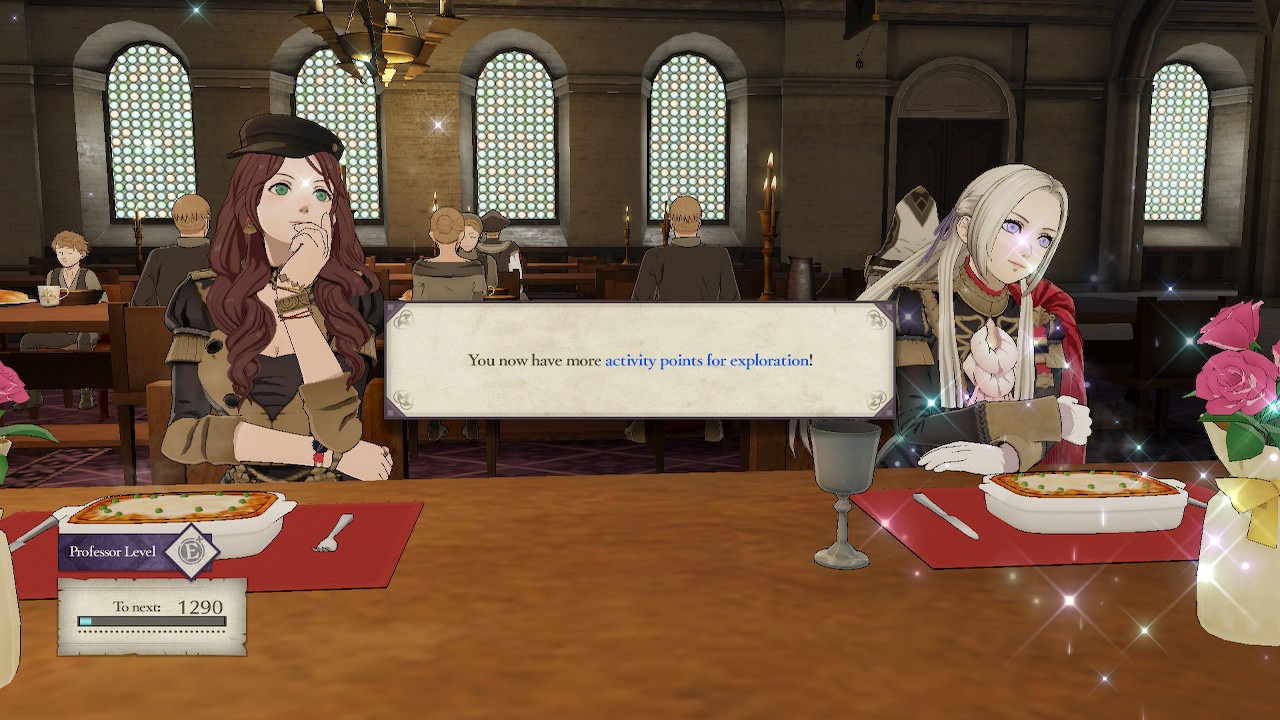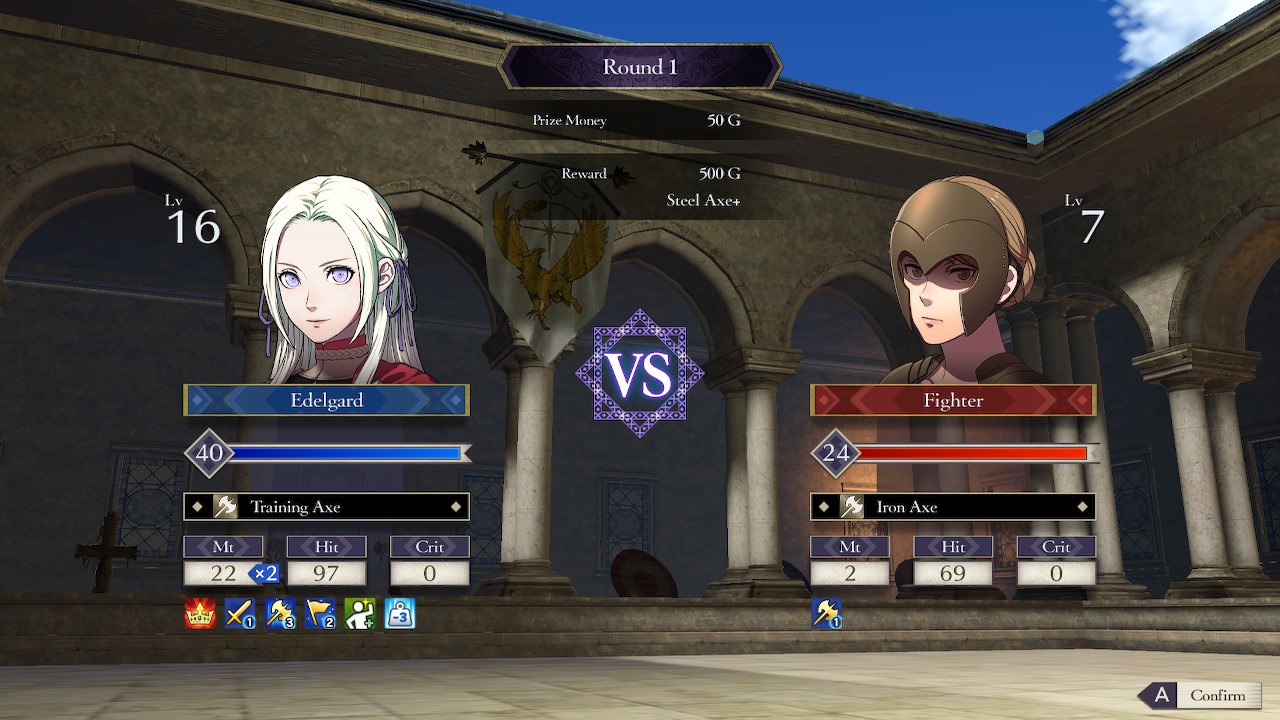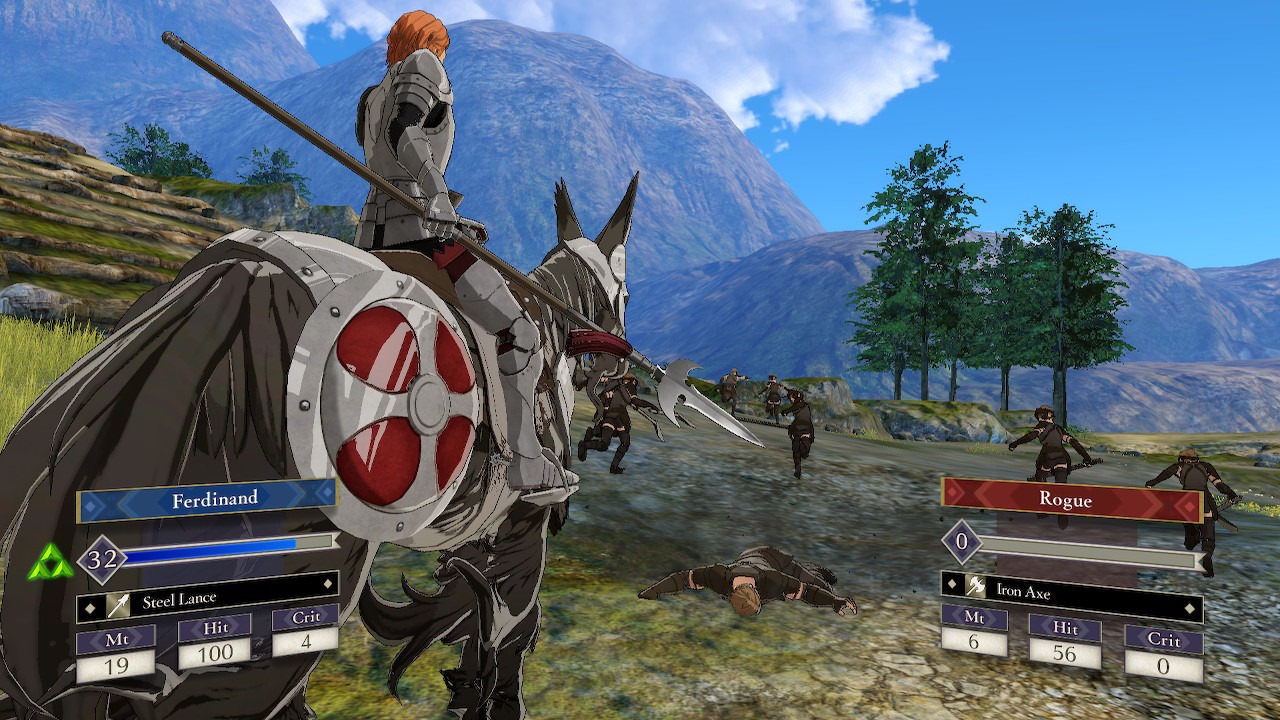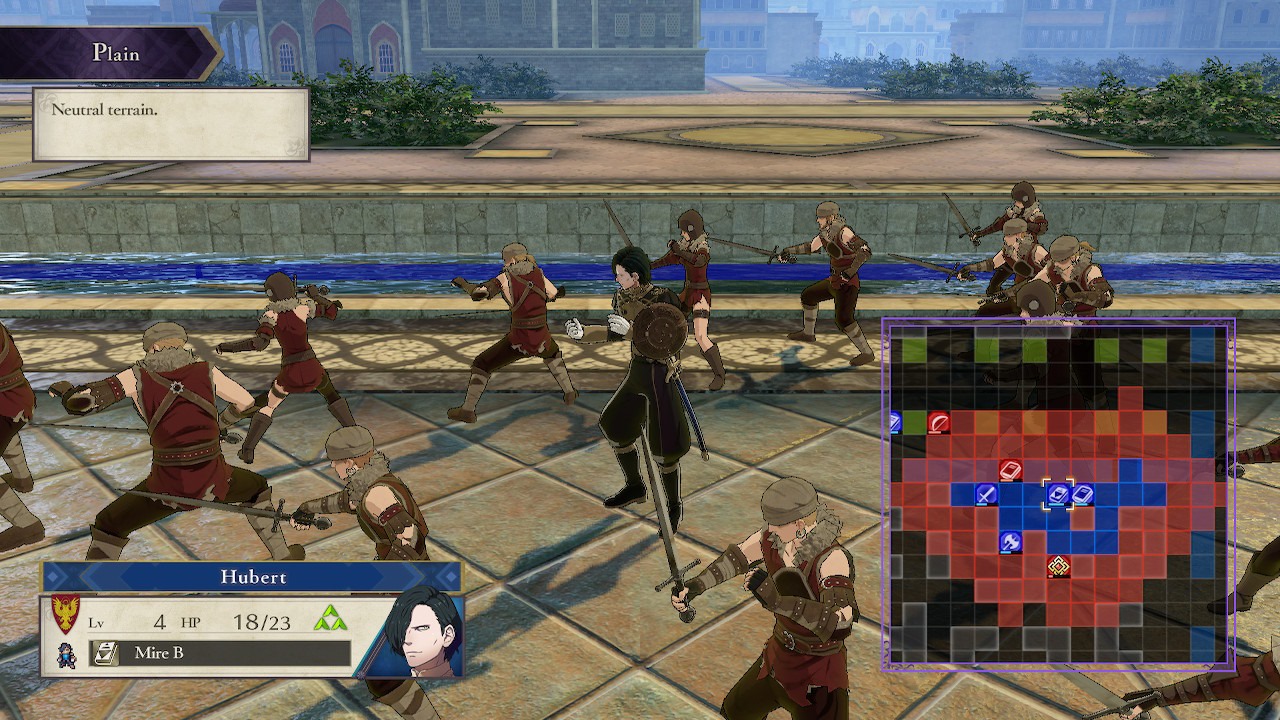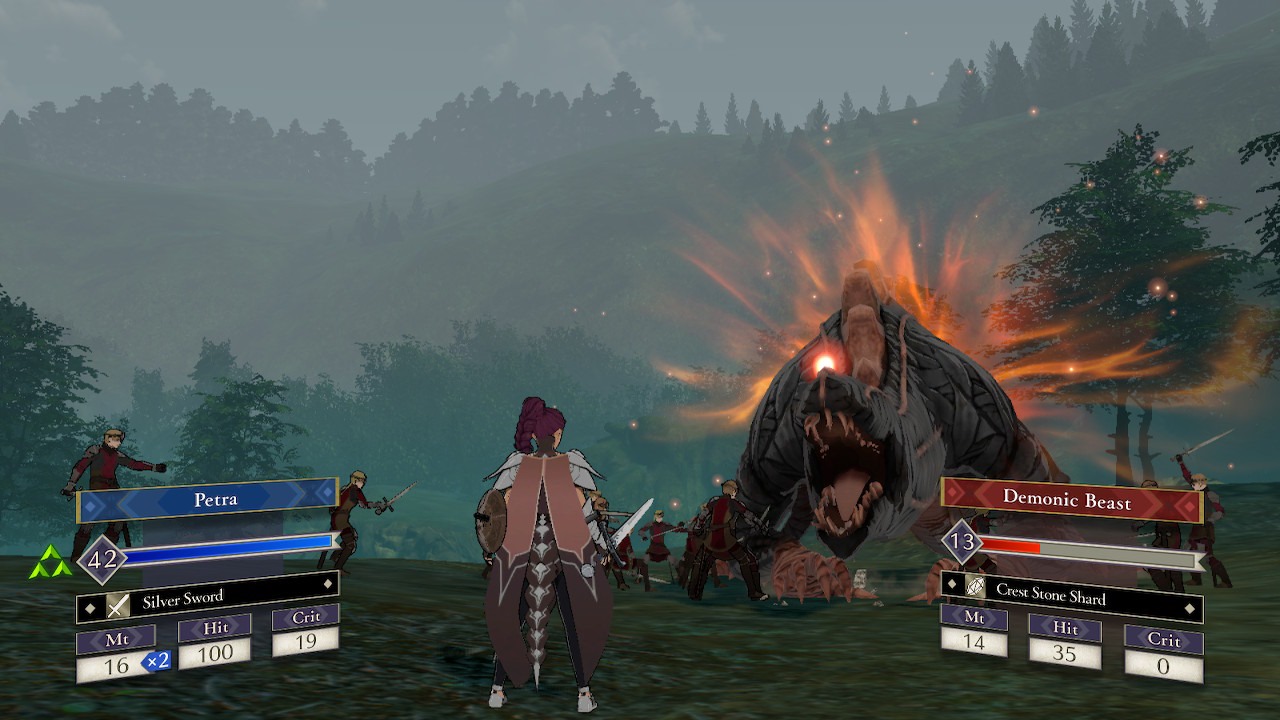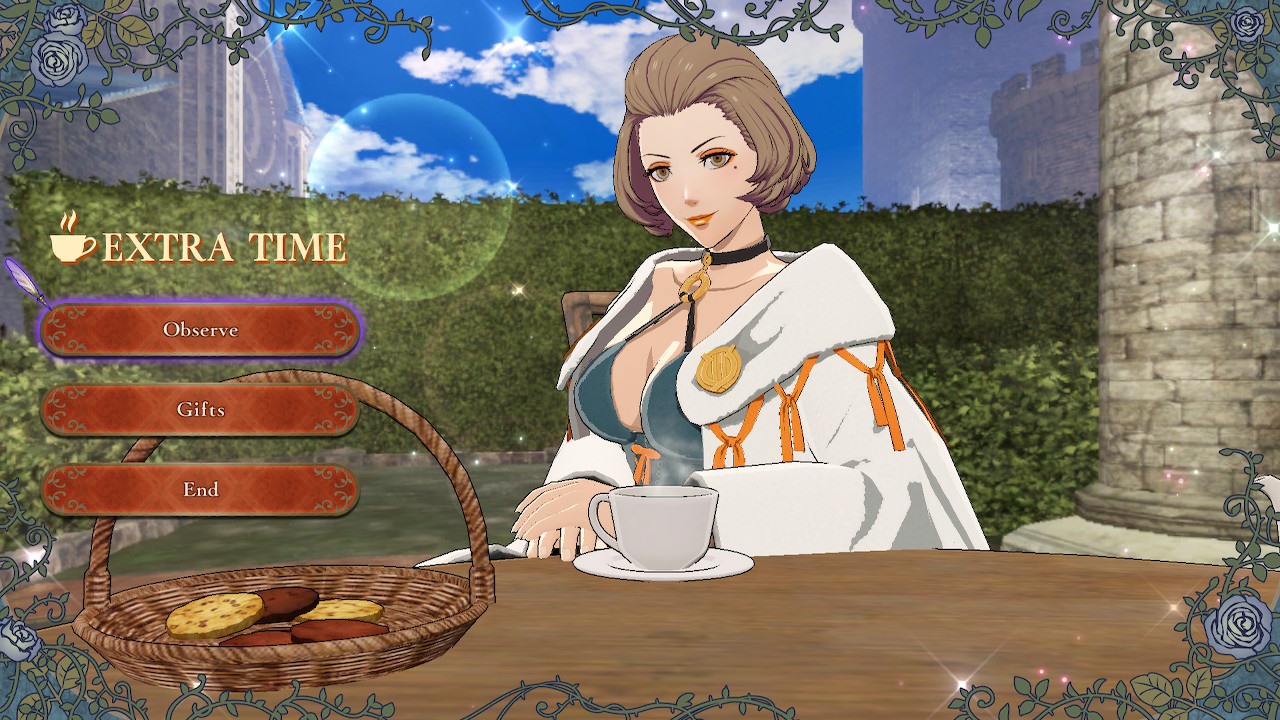by Jason Parker (Ragachak)
Fire Emblem is arguably the grandfather of the turn-based RPG genre, and the first I can think of that had Real-World Consequences. By that, I mean when a character dies, they die forever. There’s no going back for them. The earlier games in the series were hardcore, challenging, and unwelcoming to newcomers. To get into the Fire Emblem series, you had to really be up for the challenge (and enjoy it). The last couple of games introduced a controversial feature: Casual Mode. In this mode, characters who die will always come back at the end of a battle. If that wasn’t enough, “difficulties” were added!
You can play either Normal or Hard difficulty (the standard for Fire Emblem). I want to address this first before I dive into the review. There is absolutely nothing wrong with playing on Casual or Normal. This story is one worth experiencing, so don’t let someone gatekeep or ruin your fun. I started on Hard/Classic, but I hit a wall where I could no longer level-up to get past a battle. I had to lower the difficulty so I could progress without starting over. If I had made multiple saves, it would not be an issue, but that’s where we are. There’s always New Game+, and the upcoming Lunacy difficulty as well. Now that we’ve covered this, let’s talk Fire Emblem: Three Houses!
The Houses and Student Life:
As the protagonist of Fire Emblem: Three Houses, you go from Mercenary to Professor, being given a job as a leader of one of a trio of Houses in this beautiful Monastery. Each House has its own starting characters and specialties, but you can recruit just about everyone who shows up at the Monastery. Each character requires you to have a specific set of stats to recruit them. I went with the Black Eagles, since several characters have early access to Dark Magic. The Golden Deer lean more towards Archery, and the Blue Lions are slanted towards heavily-armored units. Bear in mind, you can make your characters do whatever you want through the teaching system.You can set a pair of skills for a character to focus their efforts on. Ultimately you can pick any house, and the story is almost entirely the same. One of the stories has a very different branching path, but explaining it would be too much of a spoiler. My recommendation is to pick the house that speaks to you.
Fire Emblem is split into two parts: the planning/exploration phase, and combat. Each chapter takes place over a month, with an important mission battle at the end of the month. Each Sunday, you’ll decide what to spend your time on: Explore the Monastery, have another professor run a Seminar, go into Battle, or Rest. You can also take this time to browse the Marketplace and check your Certifications. At a certain level and stat points, your characters can undergo certifications to become a new character class. These also require Seals, which come from both battle and the item shop. Some of these are a little harder to come by, however, such as Dark Seals. Depending on how close to the stat requirements for the class, you’ll have a 0-100% chance of success in passing the test. If you meet all of the requirements, it’s a 100% chance with minor exceptions. One fascinating aspect of this system: if you’re online, you can see the percentage of what other players have done in any given week. Not sure what to do? Let fate, or the actions of other players, help you decide!
Here’s a brief breakdown of what each part of the day entails.
Explore: In exploration, you run around the monastery, talking to students, using your action points to build rapport with students and teachers alike. You can also garden and fish, neither of which use AP, so every time you explore, DO THESE. You have a bunch of options while exploring.You can invite a few people to eat with you, cook with someone, spend time tutoring with a professor to improve a specific stat, go on quests, and recruit other students to your house (provided you meet their requirements.) Exploration also offers the ability to host tea parties. You can invite someone to have tea with you to try to improve your relationship. You’ll be given a series of talking points, and the more interested that person is in them, the more of a relationship you’ll build. Fail to pick an interesting topic two out of the three times, and they leave. If you thought that was enough stuff to do in a day, well, you’d be wrong! You can also pit one of your students in monthly tournaments, which can include some pretty awesome prizes. Seals, weapons, you name it. I don’t enter unless I’m way over-leveled though, because the battles are pretty grueling. This is the best way to increase your relationships, and while you can build up skill exp here, it’s no match for actually going into battle; you get real experience there.
Seminar: You can offer a professor a seminar slot for your classes during the week. Depending on what professor it is, they will increase a pair of skills, and certain characters will join in to listen. It doesn’t require a lot from you, but it’s arguably the best Skill Exp you can get in the game. Don’t just ignore Seminars, they’re incredibly useful.
Battle: Sending your students to fight and die is a time-honored tradition in the school system. Most battles will take a point away from your Battle Points (seen at the top of the screen.) You’ll start with one point, but gain more as the game progresses and your Professor Level goes up. Now, not all battles will take a point away on Normal difficulty. You will see a mission that has no “-1” beside it, meaning you can use it to level grind. Feel free to use this liberally, because you’re going to need it. This is also where Paralogues and Quest Battles will show up. Paralogues are side-stories that culminate in battles. The rewards for these are almost always amazing, so take the time to build up relationships and tackle the Paralogues.
Rest: Rest just means your students and you take the day off. This will refresh a story-related weapon to a certain degree and will make your students happy. Honestly, I almost never rest, because if I don’t do it in real life, why would I do it in a video game? Rest is for the weak.
The rest of the week is dedicated to teaching your classes. You will set up what you want to do on Monday, and the rest of the week will act itself out. If you aren’t sure what students you want to focus on, you can let the game pick for you, and it’s honestly not that bad. What I tend to do is use my exploration time to increase the motivation of certain students, and focus on them during the teaching sessions, to get the most out of the time spent. In the teaching phase, each student has a pair of goals, focused on certain skills. This could be particular weapon skills, or aspects like leadership, reason, or faith. As these skills level up, you’ll unlock more abilities and class options. If you decide you don’t like what they’re doing or want them to aim towards a different path, you can use the “Goals” icon to change them to whatever you’d like.
Throughout the week, students and professors will come to ask you questions. Sometimes it’s personal/in-character related things; if you answer correctly, you will gain significant Professor Exp and increase their motivation. They can also ask if they should stay on their current goals, or work on something else. This is another way to aim a character down a particular class/path. There are also extracurricular goals you can set a pair of students working on. These will focus on a particular skill, such as heavy armor or riding. This is a fantastic way to build relationships between two characters and build up their skill exp. Doing these well also gives gold and sharpening stones to repair and forge new weapons. This is such an important part of the game, and it’s an enjoyable look into your characters’ lives. Doing well here, and in exploration will increase your Professor Level, which will give you more points for Exploration and Battle. This will also increase the allowance given to you by the Church for items, et cetera.
Character Classes and Combat:
The character classes are broken up into several tiers, each with a character level requirement. There are Beginner Classes (Level 5), Intermediate Classes (Level 10), Advanced Classes (Level 20), and Master Classes (Level 30). Each class requires particular skills, the correct character level, and some manner of seal (Beginner, Advanced, Dark, Master, et cetera). Some classes are restricted to a particular gender, but these are far and few between. If you’re familiar with the traditional Fire Emblem classes, you’ll see many of them here. As long as you meet the requirements, you can unlock these, and build your team however you’d like.
That leads neatly into combat. The number of units you can deploy will vary, but eventually, you’ll gain access to Adjutants. An Adjutant is one of your units who will attach to a deployed character and assist them. This will include healing them on occasionally or helping them deal damage. The Adjutant will also gain exp when that character gains exp, so it’s a great way to level characters that are weaker. The pre-battle screen is also your last chance to buy items, and reposition units. You can only move a unit to an unoccupied spot, so make sure to not let your casters/healers be on the front line of a battle.
Fire Emblem: Three Houses does have a few new features for combat. In normal Fire Emblem combat, you walk up to a unit, declare the attack, and select your weapon. Then, based on hit percentage, you dealt damage and move on. But now there are Special Attacks in the game! These attacks are unlocked through your various classes, and the cost comes out of the durability of the weapon used for it. Spells may not have special attacks, but swords, bows, axes, hammers, and any other regular equipped weapons do. It’s an awesome new way to play Fire Emblem, and many of these are useful without being absolutely game-breaking or must-haves. It’s simply a new option to make battles a little more than “attack, attack, attack”. You still select this when you are declaring attack though, and it will automatically be used when the battle animations start.
Battalions are another exciting new feature in Fire Emblem: Three Houses, and come in the form of small armies that attach to a unit on the battlefield. These Battalions level up with the character they are associated with and help them in the form of increasing their stats.But Battalions offer something besides a simple stat boost; they also give your characters a new ability called a Gambit. Gambits have limited charges per battle, and offer a nice wide variety of abilities. They might heal, knock enemies back, prevent them from moving, or deal an AOE poison attack. As battles go on, your Battalions will diminish and need to be replenished. This costs a very minor amount of gold and should be done whenever possible. Several side-quests and paralogues will also unlock additional Battalions, aside from simply hiring them in the marketplace.
Combat will begin with your squad taking all of their actions, then the enemies will respond in kind. Traditional Fire Emblem games feature a Rock-Paper-Scissors system, where certain unit styles are stronger/weaker. An example to use is the Pegasus/Flying units. Flying units die at the mere mention of an arrow attack, and that has not changed.This time, the actual Rock-Paper-Scissors system is not displayed or talked about. Heavy Armored units still more or less ignore arrow attacks, and this system still feels more or less intact, without talking about it. The game does point out that the flying units are incredibly weak to ranged attacks. When you move a unit in battle, you will also see what enemy units are going to focus on them via handy arrows, and hitting ZL will show the “danger zone”, which is a purple area where enemy units can begin acting against you.
Each battle has its own victory conditions, but it’s typically “defeat X unit” or “defeat all units” for victory; the defeat condition is when you or your house leader fall in battle. As long as the protagonist doesn’t die, you have really awesome power, thanks to storyline reasons, that lets you turn back time. You can do this three times a battle, and it’s only truly a must-use in Hard/Classic, so you can avoid units dying. In the early game, I would have at least one unit die per battle and if I didn’t reset back several turns to avoid it, they would be gone forever. At chapter 12, I only had one character die forever, because, after seven tries on a battle, I gave up trying to do it without losing someone. That’s mostly due to me being underpowered, not the actual difficulty of the game (though it IS challenging). This time-travel can only happen on your turn, but you can turn back a very generous amount of turns, going back to a specific character’s action. I imagine there are people that hate this because it makes the game “too easy”, but I don’t think there’s anything easy about Fire Emblem, outside of Normal difficulty. Normal difficulty IS easy, but that’s nothing to be ashamed of. It just makes the game more accessible and offers a whole new crowd to dive into the game.
Laughter, Tears, More Tears, Sadness, Action: 4.5/5 (Great)
Fire Emblem: Three Houses has never been more accessible and enjoyable. There are plenty of tributes to previous games, and it has a must-experience story. You probably noticed by now I haven’t covered the actual story, because I don’t want to spoil anything for you. Let’s just say it’s a land in turmoil, and some characters aren’t quite what they appear to be. You ultimately have to make some pretty serious choices, depending on what house you’re in, and there is so much replay value, with additional difficulties, and other houses/teams to build. There are optional battles to challenge and so many different ways to approach each month. You can also purchase items from other players by connecting to the online servers, and use amiibos to pick up more items (and even perhaps really great items, if you use a Fire Emblem amiibo).
To give you an idea of how much this game has claimed my time when I bought it, the first twenty-four hours were done over the course of two days. It’s all I did. Fire Emblem: Three Houses is easily the best RPG on the Nintendo Switch right now, and easily one of my favorite games of the entire year. Now, the game doesn’t make everything very clear and lets you discover secrets, and there are times in the early game where it can be terribly difficult. You can’t change the game from Classic to Casual, but you can lower the difficulty from Hard to Normal (but not back up) if you need to. There are tons of characters, each with their own motivations and backstories. You get to see your students grow and interact, finding new friendships, rivals, and romances. Fire Emblem: Three Houses is an exceptional RPG, and an exceptional Fire Emblem game, holding true to the roots of the long-standing turn-based strategy RPG franchise, while also offering new features to the game that only make the experience more enjoyable. This game offers drama, love, sadness, and plenty of death. Even if you’ve never played a Fire Emblem game, you can easily dive into this one and not feel like you’ve missed a thing.
Fire Emblem: Three Houses Gallery:

